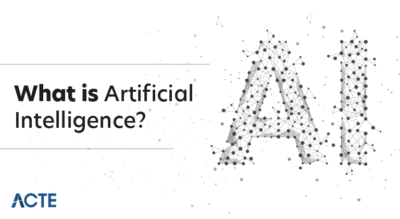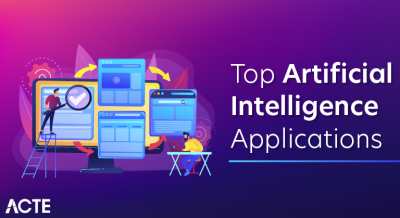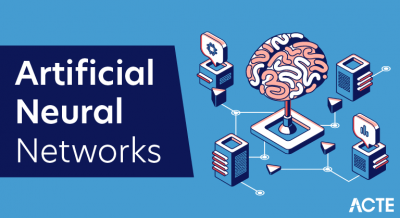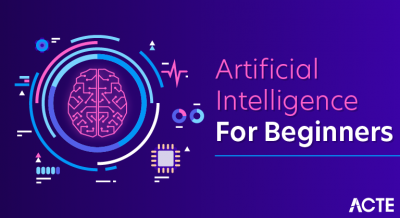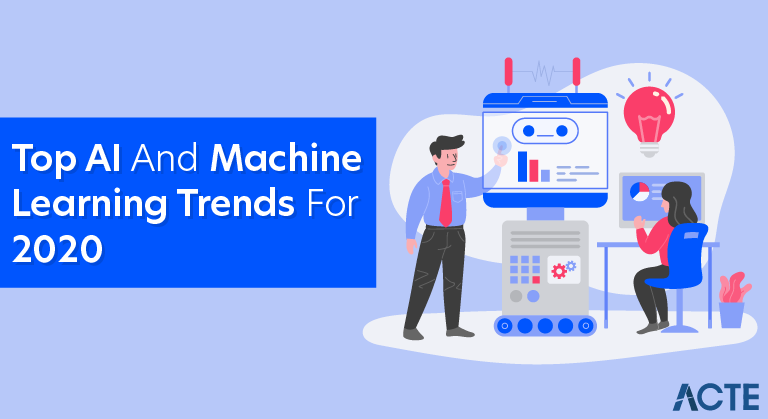
- The world has seen an unprecedented challenge and is battling this invisible enemy with all their might. The Novel coronavirus spread has left the global economies holding on to strands, businesses impacted and most people locked down. But while the physical world has come to a drastic halt or slow-down, the digital world is blooming. And in addition to understanding the possibilities of home workspaces, companies are finally understanding the scope of Machine Learning and Artificial Intelligence. A trend that was already gardening all the attention in recent years, ML & AI have particularly taken the centre-stage as more and more brands realise the possibilities of these tools. According to a research report released in February, demand for data engineers was up 50% and demand for data scientists was up 32% in 2019 compared to the prior year. Not only is machine learning being used by researchers to tackle this global pandemic, but it is also being seen as an essential tool in building a world post-COVID.
- This pandemic is being fought on the basis of numbers and data. This is the key reason that has driven people’s interest in Machine Learning . It helps us in collecting, analysing and understanding a vast quantity of data. Combined with the power of Artificial Intelligence, Machine Learning has the power to help with an early understanding of problems and quick resolutions. In recent times, ML & AI are being used by doctors and medical personnel to track the virus, identify potential patients and even analyse the possible cure available. Even in the current economic crisis, jobs in data science and machine learning have been least affected. All these factors indicate that machine learning and artificial intelligence are here to stay. And this is the key reason that data science is an area you can particularly focus on, in this lockdown.
The capabilities of Machine Learning and Data Sciences
- One of the key reasons that a number of people have been able to shift to working from home without much hassle has to be the use of ML & AI by businesses. This shift has also motivated many businesses, both small-scale and large-scale, to re-evaluate their functioning. With companies already announcing plans to look at a more robust working mechanism, which involves less office space and more detailed and structured online working systems, the focus on Machine Learning is bound to increase considerably.
The Current Possibilities
- The world of data science has been coming out stronger during this lockdown and the interest and importance given to the subject are on the rise. AI-powered mechanics and operations have already made it easier to manage various spaces with lower risks and this trend of turning to AI is bound to increase in the coming years. This is the reason that being educated in this field can improve your skills in this segment. If you are someone who has always been intrigued by data sciences and machine learning or are already working in this field and are looking for ways to accelerate your career, there are various courses that you can turn to. With the increased free time that staying at home has facilitated us with, beginning an additional degree to pad up your resume and also learn some cutting-edge concepts while gaining access to industry experts
Start learning more about Machine Learning & AI
- If you are wondering where to begin this journey of learning, a leading online education service provider, upGrad, has curated programs that would suit you! From Data Sciences to in-depth learnings in AI, there are multiple programs on their website that cover various domains. The PG Diploma in Machine Learning and AI , in particular, has a brilliant curriculum that will help you progress in the field of Machine Learning and Artificial Intelligence. A carefully crafted program from IIIT Bangalore which offers 450+ hours of learning with more than 10 practical hands-on capstone projects, this program has been designed to help people get a deeper understanding of the real-life problems in the field.
Understanding the PG Diploma in Machine Learning & AI
- This 1-year program at upGrad has been articulated especially for working professionals who are looking for a career push. The curriculum consists of 30+ Case Studies and Assignments and 25+ Industry Mentorship Sessions, which help you to understand everything you need to know about this field. This program has the perfect balance between the practical exposure required to instil better management and problem-solving skills as well as the theoretical knowledge that will sharpen your skills in this category. The program also gives learners an IIIT Bangalore Alumni Status and Job Placement Assistance with Top Firms on successful completion.
Trend 1. AI Is Helping Combat COVID-19
- A World Health Organization report from February 2020 revealed AI and big data are playing an important role in helping healthcare professionals respond to the coronavirus (COVID-19) outbreak in China.
- So, how is AI and machine learning helping combat COVID-19? There are many applications, including:
- Thermal cameras and similar technologies are being used to read temperatures before individuals enter busy places like public transport systems, government buildings, and other important areas. In Singapore, one hospital is leveraging KroniKare’s technology to provide on-the-go temperature checks using smartphones and thermal sensors.
- Chinese tech company Baidu created an AI system that uses infrared technology to predict passengers temperatures at Beijing’s Qinghe Railway Station.
- Robots are being deployed to implement “contactless delivery” for isolated individuals, helping medical staff ensure that key areas stay disinfected and safe for use.
- E-commerce giant Alibaba created the StructBERT NLP model to help combat COVID-19. This platform provides healthcare data analysis using the company’s existing platforms and search engine capabilities, which proved instrumental in expediting the country’s ability to disseminate medical records.
- Solutions like these provide a proactive approach to threat detection, which can limit the spread of infectious diseases. And when it comes to something as contagious as COVID-19, a pro-active approach isn’t just important—it’s essential.
software development through crisis
Trend 2. ML Framework Competition
- In 2019, one of the key trends in the ML was PyTorch vs. TensorFlow competition. During 2019, TensorFlow 2 arrived with Keras integrated and eager execution default mode. PyTorch eventually overtook TensorFlow as the framework of choice for AI research.
- Why is PyTorch better for research? PyTorch integrates easily with the rest of Python. And it is simple and easy to use, making it accessible without requiring too much effort to set it up. In contrast, TensorFlow crippled itself by repeatedly switching APIs, making it more difficult to use.
- When it comes to performance, PyTorch has comparable speed to TensorFlow, which makes it technologically superior. Still, TensorFlow is compatible with more business solutions, though, so most businesses have not made the switch yet. While PyTorch is now the common framework used for research, businesses are still using TensorFlow well into 2020.
Trend 3. AI Analysis for Business Forecasts
- ML-based time series analysis is a hot AI trend in 2020. This technique collectively analyzes a series of data over time. When used correctly, it aggregates data and analyzes it in such a way that allows managers to easily make decisions based on their data.
- Using an ML network to process the complex calculations required to apply statistical models to your business’s structured data is a major improvement over traditional methods. This ML-boosted analysis offers high-accuracy forecasts that are 90-95% accurate. When the AI network you’re using is properly trained, it can capture features of your business, such as seasonality and cross-correlation in demand forecasting for retail.
- In 2020 we’ll see a growing trend for applying recurrent neural networks for time series analysis and forecasting. Recurrent neural networks, which are an application of deep learning, are one reason we believe that deep learning will end up replacing traditional machine learning. For example, deep learning can forecast data, such as future exchange rates for currency with a surprisingly high degree of accuracy.
- The research into time series classification has made substantial progress in recent years. The problem being solved is complex, offering both high dimensionality and large numbers. So far, no industry applications have been achieved. However, this is set to change as the research into this field has produced many promising results.
- Another type of artificial intelligence that has been recently developed is the convolutional neural network (CNN). This type of ML network discovers and extracts the internal structure that is required to generate input data for time series analysis.
- Along with forecasting the future, there’s another technology that could be widely applied: anomaly detection based on autoencoders that run artificial neural networks using unsupervised learning algorithms. These systems are capable of capturing common patterns while ignoring “noise.” Encoded feature vectors allow businesses to separate anomalies, such as financial, political, and even social data.
MACHINE LEARNING IN DEMAND FORECASTING FOR RETAI
Trend 4. Reinforcement Learning
- Reinforcement learning (RL) is leading to something big in 2020. RL is a specialized application of deep learning that uses its own experiences to improve itself, and it’s effective to the point that it may be the future of AI.
- When it comes to reinforcement learning AI, the algorithm learns by doing. Initially, actions are tried at random, but eventually, this becomes a logical process as it attempts to attain specific goals. The operator rewards or punishes these actions, and the results are fed back into the network to “teach” the AI.
- No predefined suggestions are given to the reinforcement learning agent. Instead, the AI starts out by acting completely randomly, and eventually learns how to maximize its reward through repetition. Reinforcement learning allows the algorithm to develop sophisticated strategies.
- Reinforcement learning is the best way to simulate human creativity in a machine by running many possible scenarios. The model can even be adapted to complete complex behavioral tasks. It’s an ideal solution for solving all kinds of optimization problems.
- Self-improving chatbots are one example of reinforcement learning’s effect. A goal-oriented chatbot is one that is designed to help a user solve a specific problem, such as making an appointment or booking a ticket to an event. A chatbot can be trained using reinforcement learning through trial and error to become a fully functional automated assistant to customers.
Trend 5. AI-driven Biometric Security Solutions
- Significant advancements have been made in biometric verification. Bio-ID is no longer something you’d expect to see in sci-fi films. This emerging ML trend is one to keep your eye on.
- ML’s efficient approach to gathering, processing, and analyzing large data sets can improve the performance of your biometric systems. Running an efficient biometrics system is all about performing matching tasks quickly and accurately, and this is a task that ML networks excel at.
- The reliability of AI based biometric security is also increasing. Here’s an example: a deep learning-based face anti-spoofing system allows you to secure any face recognition solution from any attempt to imitate a real face.
- Another example of biometrics ML applications is Amazon’s Alexa, which is now able to tell who is speaking by comparing the speaker to a predetermined voice profile. No extra hardware is necessary to help a properly trained neural network to accurately identify the speaker.
- In 2020, we predict that various biometrics will be combined with ML to create a comprehensive security solution. Multimodal biometric recognition is within our reach, thanks to advancements in AI technology.
MULTIMODAL BIOMETRIC VERIFICATION FOR BUSINESS SECURITY
Trend 6. Automated Machine Learning
- AutoML is adapted to execute tedious modeling tasks that once required weeks or months of work by professional data scientists.
- AutoML runs systematic processes on the raw input data to choose the model that makes the most sense. AutoML’s job is to find a pattern in the input data and decide what model is best applied to it. Previously these activities were processed by hand.
- AutoML applies several different machine learning techniques. Google’s AutoML (a combination of recurrent neural network (RNN) and reinforcement learning) is one example. After extensive repetition, a high degree of accuracy can be achieved automatically.
- Major cloud computing services offer a type of AutoML. Google AutoML and Azure Automated Machine Learning are two popular examples. Other options include the open-source AutoKeras, tpot, and AutoGluon MLaaS platforms. The best choice for your business will depend on your business’s goals and budget.
- So, is AutoML effective? The answer in practice is often yes. For example, Lenovo was able to use DataRobot by AWS to reduce model creation time for their demand forecasts from 3-4 weeks to 3 days—representing an impressive sevenfold improvement. Model production time was lowered by an even larger factor, all the way from two days to five minutes! The prediction accuracy of these models has also increased.
Trend 7. Explainable AI
- The European Union tasked ML designers, known as the Right to Explanation, to make artificial intelligence more transparent to consumers and users. Explainable AI is a type of AI technology that has been designed to fit these criteria.
- Unlike regular black-box machine learning techniques, where it’s often impossible to explain how the AI came to a certain conclusion, explainable AI is designed to simplify and visualize how ML networks make decisions.
- What does “black box” mean? In traditional AI models, the network is designed to produce either a numerical or binary output. For example, an ML model designed to decide whether to offer credit in specific situations will output either “yes” or “no,” with no additional explanation. The output with explainable AI will include the reasoning behind any decision made by the network, which using our example, allows the network to provide a reason for approving or denying the credit request.
Example of explainable AI
- Businesses are starting to rely on various trending machine learning algorithms to make decisions. According to Gartner, around 30% of large enterprise contracts are likely to require these solutions by 2025. Explainable AI is necessary if companies require proper accountability during these processes.
- One example of this future trend in AI is Local Interpretable Model-Agnostic Explanation (LIME). This Python library explains the predictions of any classifier by learning a special human-readable model around the predictions. With LIME and other techniques, even non-experts in the field are able to find and improve inaccurate models. This is still a very new field with plenty of room for improvement.
Trend 8. Conversational AI
- Throughout 2019 and 2020, artificial intelligence has developed to a point where it can now compete with the human brain when it comes to everyday tasks, such as writing. Researchers at OpenAI claim that their AI-based text generator is able to generate realistic stories, poems, and articles. Their GPT-2 network was trained using a large writing data set and can adapt to different writing styles on demand.
- Bidirectional Encoder Representations from Transformers (BERT) is another significant outcome in the AI field. This is another text AI that is designed to pre-train models using given text. The major advancement is how BERT processes text.
- Unlike previous approaches, which read the text either from left to right or right to left, but never both, BERT brings a language model that allows for bidirectional training. BERT has a deeper understanding of language than any network that came before it and uses several types of preceding architecture to generate accurate predictions for text.
- The better the computer understands text that is fed into it, the higher-quality the machine’s responses will be. BERT is a step closer to an AI that is able to accurately understand and answer questions that are fed into it, just like a human could.
- XLNet is an autoregressive pre-training model that’s able to predict words from a set of text using context clues. Despite being only a simple feed-forward algorithm, it has managed to outperform BERT in many NLP tasks.
NATURAL LANGUAGE PROCESSING USE CASES FOR BUSINESS OPTIMIZATION
- One clear application is voice-enabled AI. Voice activation and voice commands all function on the basis of the computer understanding the voice-to-text transcript of the spoken command. The better the computer can understand the text, the more accurately it can perform spoken commands as well.
- With over 110 million virtual assistant users in the USA alone, there is a massive market for improving voice recognition. Today, voice-enabled devices, such as the Amazon Echo and Google Home, are common in homes. Any improvement to the voice assistant technology will lead to an increase in business in this sector, and ML is the quickest path to achieving these improvements.
Trend 9. Generative Adversarial Networks
- Generative Adversarial Networks are a way to generate new data using existing data in such a way that the new product resembles the original. This may not seem too impressive at first—after all—copying is easy, right? Well, not quite.
- By generating similar but non-identical data, GANs are able to produce amazing data, such as synthetic photos of a human face that are indistinguishable from a real human.
- Since being invented by Ian Goodfellow in 2014, GANs have achieved significant progress in the field of synthetic face generation.
GAN’s progress in the field of synthetic face generation
- There is an impressive example of GAN technology at work. A fake face generator was developed by Nvidia. It’s known as This Person Does Not Exist, and has gained some traction online. Other examples are facial processing apps that can produce aged or gender-swapped versions of an existing photo.
- So, how do GANs work? A GAN is an ML network that is trained using two neural network models: a generator model and a discriminator model. One of these models, the generator, is responsible for creating new data samples. The discriminator’s job is to decide whether the generated data is distinguishable from real data samples. During training, the two models are competing against each other, with the generator trying to fool the discriminator.
- But it’s not all perfect. Advancements in GANs have caused concern in the industry through their ability to synthesize totally fabricated, but realistic images. The DeepFakes scandal is an example of how GANs can be misused.
- A properly used GAN is able to generate new images from only a description. Soon enough, these networks will be used for applications such as police sketches. Aside from generating new images, the discriminator of a GAN is a good way to detect anomalies and holds plenty of applications in quality control and other inspection-based work.
Trend 10. Convergence of IoT and AI
- Industrial IoT processes are generally not as efficient as they could be. This leaves plenty of room for AI algorithms to help increase efficiency and reduce downtime for various businesses through methods such as predictive maintenance or defect detection. Overall, the addition of AI to a manufacturing process can only increase its efficiency.
- The current IoT trends reveal that businesses are accepting the potential of ML. Rolls Royce partnered with Azure IoT Solutions to use the cloud and IoT devices to their advantage. The power of predictive maintenance shouldn’t be underestimated, and Rolls Royce is taking advantage of their IoT devices to check the health of their aircraft engines to keep their uptime at a maximum.
- Another company that has jumped onto the IoT-AI bandwagon is Hershey. In Hershey’s production facilities, even a 1% variance in weight can cost a lot. Using Microsoft Azure machine learning network, Hershey was able to significantly reduce the variability of their product weight, resulting in major savings.
- One important machine learning option to improve the IoT software development process is knowledge distillation.
ML model knowledge distillation
- In this type of learning, ML network learns how to produce desired results through techniques such as reinforcement learning. Then, a small ML network is trained to produce identical results to the large ML network. The point of knowledge distillation is model compression. This smaller ML network is easier to run on less powerful devices, such as IoT sensors and other mobile devices. With knowledge distillation, it’s possible to decrease an ML model’s weight on a given device by up to 2000%, saving both on energy and hardware budget.
- An example of knowledge distillation is a video surveillance system that needs to detect the genders of people on camera in real-time. Detecting a person’s gender takes a large neural network, which is best run on the cloud. However, for real-time detection, you can’t always rely on the cloud. By distilling the larger network’s knowledge into the smaller one, the same gender detection task can be performed by a network small enough to fit onto a small mobile or edge device, resulting in large savings.
An example of knowledge distillation in a video surveillance system
The Future of AI: It Is Only Getting Started
- Advancements in hardware, computing power, and other technical specifications will continue to fuel the rise of AI technologies.
- Are you interested in learning more about trending machine learning algorithms? Would you like to see various use cases for these technologies? Get in touch with the MobiDev team today to discuss your product.

